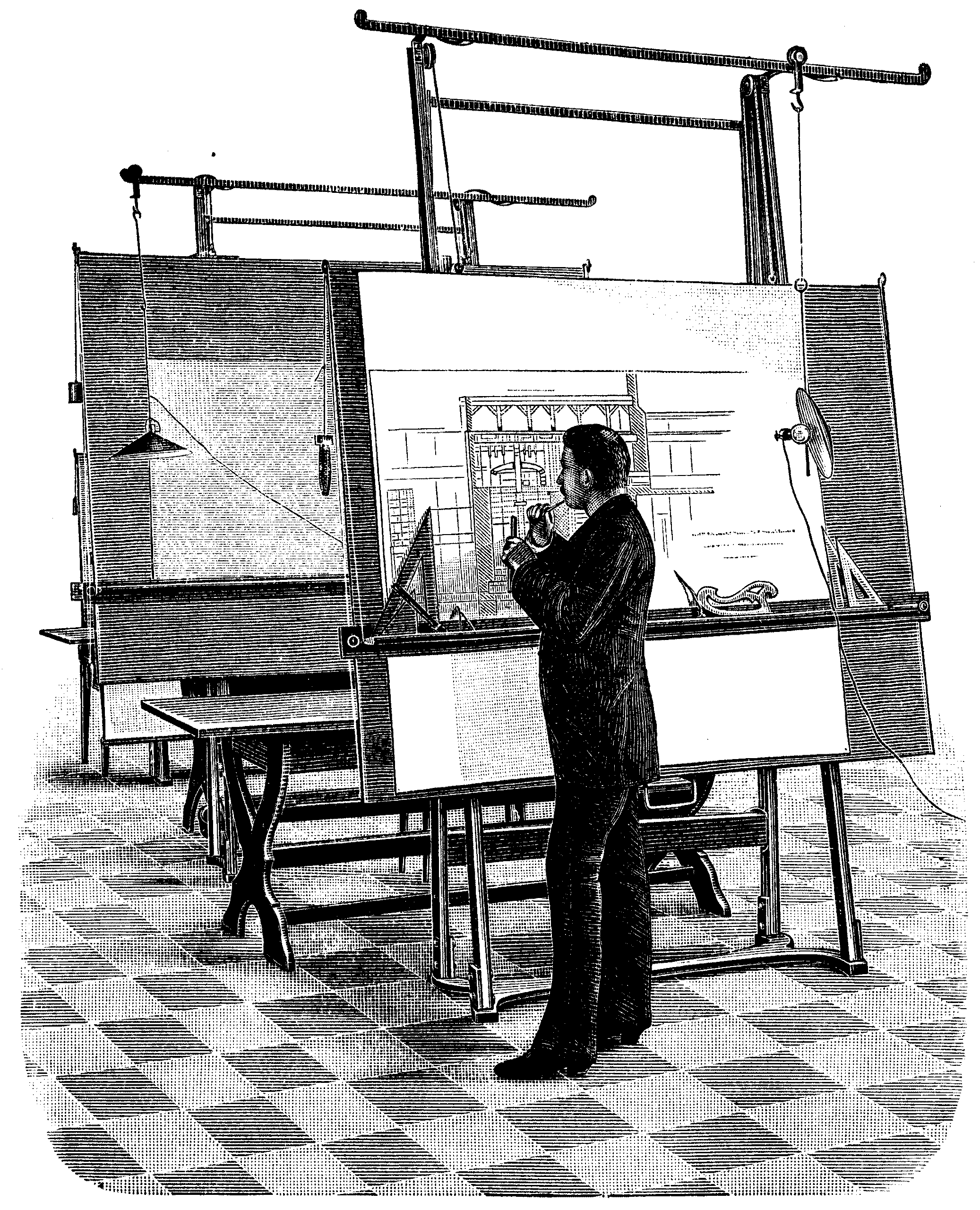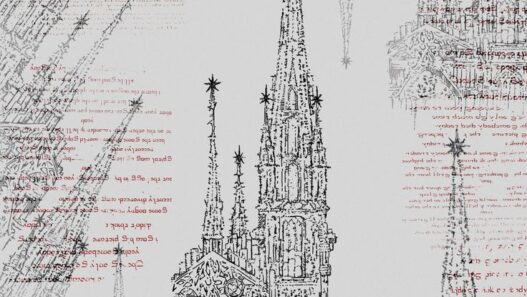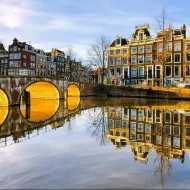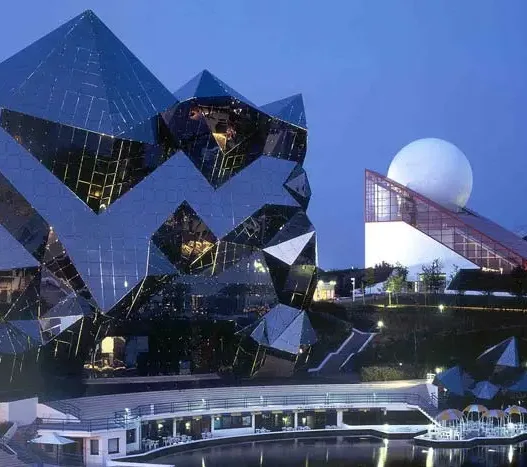Copenhagen is a city where architecture blends rich history and modern innovation. Known for its picturesque canals and vibrant neighborhoods, the city’s architectural landscape tells a story of evolution, sustainability and urban livability.
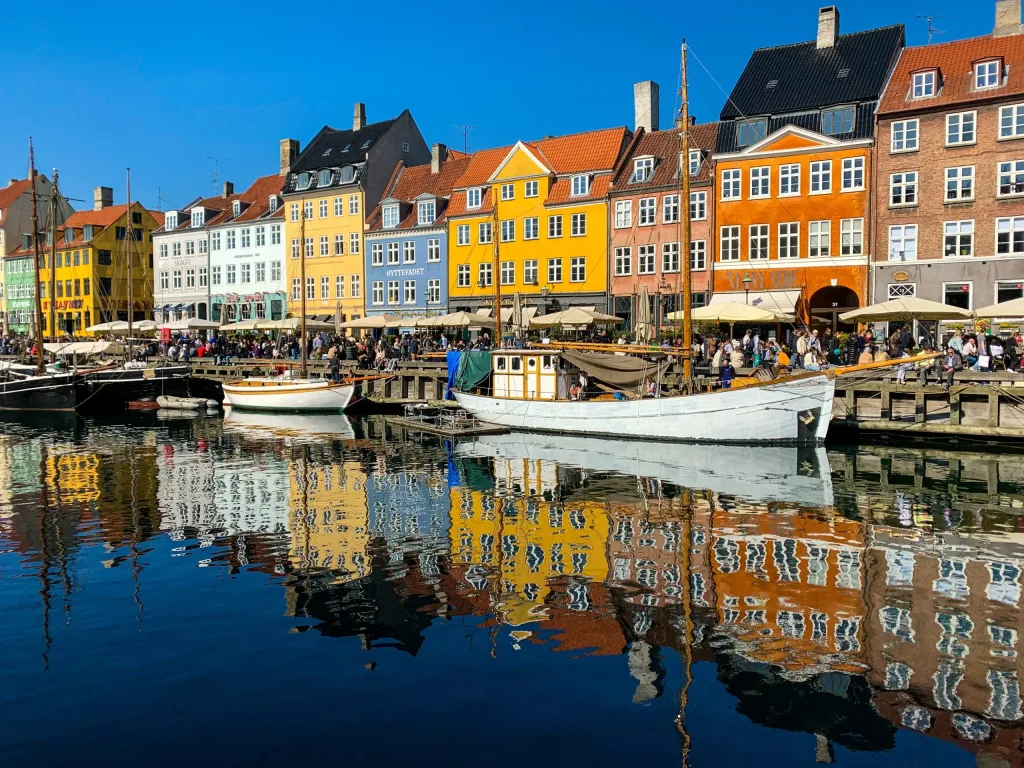
Historical Context
Copenhagen’s history is like a tapestry woven with the influences of various eras. Founded in the 10th century, the city has grown from a small fishing village to a bustling capital city. Its historical context is crucial to understanding its architectural identity. The medieval order with its narrow streets and quaint buildings reflects the city’s origins, while the Renaissance brought grand palaces and fortifications, such as the iconic Rosenborg Castle. Over the centuries, Copenhagen has faced numerous challenges, including fires and wars, leading to periods of reconstruction and modernization. This historical evolution has left a lasting mark on the city’s architectural landscape, creating a unique blend of old and new.
Main Architectural Styles
Copenhagen’s architectural styles are as diverse as its history. From the colorful, gable-roofed houses of Nyhavn, representing Dutch Renaissance influences, to the minimalist designs of contemporary Danish architecture, the city displays a variety of styles. The Baroque period brought grandeur, exemplified by the majestic Amalienborg Palace. The 20th century saw the rise of functionalism, emphasizing practicality and simplicity with buildings such as the Danish Radio Concert Hall. Today, architects such as Bjarke Ingels are pushing the boundaries of design with innovative buildings that prioritize both aesthetics and functionality. This rich tapestry of architectural styles is a reflection of the city’s cultural evolution as well as enhancing its visual appeal.
The Role of Urban Planning
In Copenhagen, urban planning is a critical aspect of architectural success. By taking a holistic approach to urban design, the city is focused on creating spaces that encourage community participation and accessibility. The integration of green spaces, pedestrian-friendly streets and efficient public transportation systems demonstrate this commitment. For example, the redevelopment of the harbor area has transformed previously industrial areas into vibrant public spaces, encouraging social interaction and outdoor activities. This careful planning ensures that the city remains livable and enjoyable for its residents, while attracting visitors from around the world.
The Importance of Sustainability
Sustainability is at the heart of Copenhagen’s architectural philosophy. The city aims to be carbon neutral by 2025 and this ambitious goal is reflected in its building practices. Architects and planners prioritize environmentally friendly materials, energy-efficient designs and renewable energy sources. The Copenhagen Opera House, where advanced technologies are used to minimize energy consumption, is a prominent example. The city also encourages cycling as a primary means of transportation with its extensive bicycle lanes and infrastructure that supports this sustainable lifestyle. By embedding sustainability into its architectural framework, Copenhagen not only improves the quality of life for its residents, but also sets a global standard for urban living.
Overview of Important Landmarks
Copenhagen is home to many landmarks that emphasize its architectural skill and cultural significance. The statue of the Little Mermaid, inspired by Hans Christian Andersen’s fairy tale, remains a symbol of the city and attracts millions of visitors every year. Tivoli Gardens, one of the oldest amusement parks in the world, combines whimsical architecture with lush green landscapes to create a magical atmosphere. Another gem, the Church of Our Savior, has a spiral corkscrew tower that offers panoramic views of the city. Each of these landmarks is not only an architectural achievement, but also a testament to Copenhagen’s rich heritage and the city’s commitment to preserving its history while looking to the future.
As a result, Copenhagen’s architectural landscape is a fascinating mix of history, style and sustainability. With each building and public space, the city tells the story of its journey through time, reflecting its cultural richness and commitment to creating a livable urban environment. As Copenhagen continues to innovate and inspire, it serves as a model for cities around the world striving for sustainable urban livability.
Copenhagen is often praised as a model for sustainable urban living. The city has made significant strides in integrating nature into its urban landscape, focusing on creating spaces that enhance both environmental health and community well-being. One of the most important initiatives contributing to this vision is the Green Roof Initiative. This program not only transforms rooftops into green spaces, but also embodies the city’s broader commitment to sustainability and livability.
Green Roof Initiative
The Green Roof Initiative in Copenhagen represents a transformative approach to urban architecture. By transforming traditional flat roofs into living gardens, the city aims to improve environmental quality and enhance the aesthetic appeal of urban areas. This initiative is in line with Copenhagen’s goal to be carbon neutral by 2025 and demonstrates how innovative design can address pressing environmental challenges while enriching urban life.
Concept and Benefits
In essence, the green roof concept involves laying vegetation on a waterproof membrane on roofs. This practice provides numerous benefits. First, it helps manage stormwater by absorbing rainfall, reducing runoff and mitigating flood risks. Secondly, green roofs can provide insulation, leading to lower energy costs for heating and cooling buildings. They also improve air quality by filtering pollutants and carbon dioxide, contributing to healthier urban environments. Beyond these environmental benefits, green roofs also create inviting spaces for residents and wildlife, fostering a sense of community and connection to nature.
Notable Green Roof Projects
Copenhagen has several notable green roof projects that exemplify the success of the initiative. One prominent example is the Copenhagen Opera House, where the green roof not only serves an aesthetic purpose, but also functions as a public park offering breathtaking harbor views. Another notable project is the Danish Architecture Center, whose green roof, designed to mimic the local landscape, blends seamlessly into the urban fabric. These projects highlight how green roofs can be integrated into different building types, from cultural landmarks to everyday offices, demonstrating versatility and creativity in design.
Impact on Biodiversity
The Green Roof Initiative has a profound impact on urban biodiversity. By adding plants and habitats to the cityscape, green roofs act as critical refuges for a variety of species, including pollinators such as bees and butterflies. By supporting diverse flora and fauna, these roofs can contribute to the overall ecological health of the city. In a densely populated urban environment, every green space counts and green roofs help create corridors for wildlife, connect fragmented habitats and increase the resilience of urban ecosystems.
Urban Cooling Benefits
Another important advantage of green roofs is their role in urban cooling. Cities are often subject to the “urban heat island” effect, where built-up areas become significantly warmer than their rural surroundings. Green roofs combat this phenomenon by providing natural insulation and evaporative cooling, helping to lower ambient temperatures. This cooling effect not only makes urban areas more comfortable for residents, but also reduces the demand for air conditioning, leading to lower energy consumption and reduced greenhouse gas emissions.
Community Engagement and Education
The success of the Green Roof Initiative in Copenhagen is deeply intertwined with community engagement and education. Many green roofs are designed as accessible spaces where residents can participate in gardening, workshops and educational programs. This participation fosters a sense of ownership and pride among citizens, encouraging them to take an active role in environmental management. By educating the public about the benefits of green roofs and sustainable practices, Copenhagen is developing a culture of sustainability that goes beyond individual projects, influencing broader community behavior and attitudes towards urban living.
In summary, the Green Roof Initiative in Copenhagen is an excellent example of how urban design can promote sustainability, increase biodiversity and improve the quality of life for residents. By transforming rooftops into green spaces, the city is not only tackling environmental challenges, but also creating vibrant, livable communities that celebrate the interplay between nature and urban life.
Copenhagen stands out as a pioneer of sustainable urban living, where the integration of cycling into everyday life is not an afterthought, but a fundamental component of the city’s identity. This commitment to cycling as a primary means of transportation has transformed the urban landscape, making it more livable, environmentally friendly and economically vibrant. By exploring the intricate details of bicycle infrastructure, we can better understand how Copenhagen has created a model of urban sustainability that other cities aspire to emulate.
Bicycle Infrastructure as a Design Element
The city of Copenhagen has woven cycling into its urban fabric, creating not just roads but a comprehensive cycling culture. This infrastructure goes beyond mere functionality and serves as a design element that enhances the aesthetic and practical aspects of urban life. We explore the history, characteristics and future of cycling in Copenhagen, uncovering a story of innovation, community and resilience.
Historical Development of Cycling in Copenhagen
The roots of cycling in Copenhagen can be traced back to the early 20th century, when cycling grew in popularity as a practical means of transportation. Initially, the rise of the automobile in the mid-20th century overshadowed cycling and led to a decline in cycling. However, the 1970s marked a turning point. In the face of the oil crisis and growing environmental concerns, city planners began to reprioritize cycling. This resurgence was not just about transportation; it was about reclaiming public space for people rather than vehicles.
Today Copenhagen is known for its extensive network of bicycle lanes, which have been continuously developed and improved over the decades. The city’s commitment to cycling is reflected in its investment in infrastructure and promotion of cycling culture, making it the most bike-friendly city in the world.
Important Cycling Routes and Features
Copenhagen has kilometers of dedicated bicycle routes that are seamlessly integrated into the urban landscape. These routes are often separated from vehicular traffic, allowing cyclists to travel safely and comfortably. Important routes such as the ‘Copenhagen City Ring’ and the ‘Bicycle Superhighways’ connect various neighborhoods, making it easier for residents to travel around the city without the need for cars.
Copenhagen’s bicycle routes are designed with the user experience in mind. For example, the city has installed smart traffic signals that prioritize cyclists, reduce waiting times and encourage more people to cycle. The availability of bicycle parking, repair stations and rental services further increases the convenience of cycling, making it an attractive option for both residents and visitors.
Safety Measures and Innovations
Safety is paramount in the design of Copenhagen’s cycling infrastructure. The city has taken numerous measures to protect cyclists on the road. These include well-marked bicycle lanes, physical barriers separating cyclists from motor vehicles, and special traffic signals for cyclists. In addition, the city regularly conducts safety assessments and works with the cycling community to identify areas for improvement.
Innovative solutions, such as the introduction of ‘green wave’ traffic lights, encourage the smooth flow of traffic by allowing cyclists to travel through intersections without stopping. The use of smart technologies, such as apps that provide real-time data on bikeway conditions and traffic patterns, further improves safety and convenience for cyclists.
Social and Economic Impact
The emphasis on cycling has profound social and economic impacts. Culturally, cycling fosters a sense of community by encouraging social interactions and active lifestyles. It is linked to improved public health outcomes, as people who cycle regularly tend to be more physically active and generally healthier.
Copenhagen’s investment in cycling infrastructure has also paid off economically. Research shows that cycling contributes significantly to the local economy, especially in areas with high pedestrian and bicycle traffic. Businesses benefit from increased customer access and the city saves on infrastructure costs related to road maintenance for vehicles. Furthermore, a reduced reliance on cars reduces pollution and traffic congestion, making Copenhagen a more attractive destination for both tourists and residents.
Future Developments in Cycling Infrastructure
Looking ahead, Copenhagen continues to renew and expand its cycling infrastructure. Future plans include the development of additional Bicycle Superhighways aimed at connecting the city to surrounding municipalities, and further improvements to existing bicycle routes. The city is also exploring the integration of electric bikes and cargo bikes into its cycling strategy, recognizing the growing demand for different cycling options.
As the city’s population grows, Copenhagen’s forward-thinking approach to cycling is a model for cities around the world. By prioritizing sustainable transportation and investing in cycling infrastructure, Copenhagen is not only improving mobility, but also the overall quality of life for its residents. The city’s commitment to embracing the bicycle as a design element reflects a broader vision of urban livability that prioritizes people, community and the environment.
Copenhagen, the capital of Denmark, has become a pioneer of sustainable urban design, blending modernity with environmental responsibility. As cities around the world grapple with climate change and urban sprawl, Copenhagen stands out for its innovative approaches to architecture and urban planning. This section focuses on some of the city’s most iconic sustainable buildings that not only showcase cutting-edge designs, but also promote a healthier, more livable urban environment.
Iconic Sustainable Buildings
Sustainable architecture in Copenhagen is characterized by a commitment to reducing environmental impact while improving the quality of life of its inhabitants. The buildings discussed here exemplify this philosophy and show how thoughtful design can lead to impressive structures that serve both people and planet.
Orestad Urban Development
Orestad is a groundbreaking urban development that redefines the concept of city living. Located just south of the city center, it embodies the principles of sustainability and innovation. It includes a mix of residential, commercial and recreational areas, connected by greenways and a public transportation network.
One of the most striking aspects of Orestad is its emphasis on integrating nature into urban life. Parks, green roofs and open spaces are strategically placed to promote biodiversity and provide residents with accessible recreational spaces. This integration fosters social interactions and a sense of belonging among residents, creating a community spirit.
Orestad also prioritizes energy efficiency. Buildings are designed to reduce the need for artificial heating and cooling by maximizing natural light and ventilation. This not only reduces energy consumption, but also improves the overall well-being of residents by creating healthier living environments.
Copenhagen Opera House
The Copenhagen Opera House is a striking example of how architecture can blend harmoniously with its surroundings while emphasizing sustainability. Located on the seafront, this building is not only an artistic masterpiece, but also an engineering marvel. Completed in 2005, it features state-of-the-art technology designed to minimize energy use.
The Opera House has a green roof that helps insulate the building and absorbs rainwater, reducing runoff into the city’s drainage systems. The building’s design features large windows that provide abundant natural light, further reducing reliance on artificial lighting. The building’s commitment to sustainability extends to its operations, where energy-efficient practices are used in lighting and heating.
This iconic building has become a cultural center in Copenhagen, hosting performances that attract art lovers from around the world. The building’s presence not only enriches the city’s cultural landscape, but also serves as a powerful symbol of Copenhagen’s commitment to sustainability.
UN City Hall
The UN City Hall is another remarkable example of sustainable architecture in Copenhagen. Opened in 2013, this building houses various UN organizations and embodies the principles of sustainable development. Its design reflects a commitment to environmental responsibility, with features aimed at achieving high energy efficiency.
The building incorporates renewable energy sources such as solar panels and geothermal heating, which significantly reduce its carbon footprint. It also takes a comprehensive approach to resource management, using rainwater harvesting systems to provide non-potable water for irrigation and toilet flushing.
Furthermore, the UN City Hall is strategically located near public transportation, encouraging employees and visitors to use sustainable modes of transportation. With a focus on accessibility and sustainability, this project aligns with the UN’s mission and sets a standard for international architecture.
The House by Bjarke Ingels Group
Designed by the renowned Bjarke Ingels Group, The House is a striking residential building that reimagines urban living. Completed in 2010, this innovative structure features a unique design that allows for communal living while maintaining individual privacy. Its distinctive octagonal shape encourages interaction between residents and promotes a sense of community.
Sustainability is at the heart of the House’s design. The building includes green terraces and communal gardens that not only enhance biodiversity but also provide residents with spaces for relaxation and socializing. Furthermore, its design contributes to energy efficiency by maximizing natural light and ventilation.
The house exemplifies how residential architecture can promote community while adhering to sustainable practices. It has become a model for future developments, showing that urban living can be both pleasant and environmentally friendly.
Royal Danish Embassy in Berlin
The Royal Danish Embassy in Berlin stands as a testament to Denmark’s commitment to sustainable architecture on the international stage. Completed in 2018, the embassy not only serves as a diplomatic center, but also embodies the principles of sustainable design and construction.
The building features a façade made of natural materials that blend in with its surroundings, reflecting the Danish principle of harmony with nature. It also incorporates energy-saving technologies and sustainable building practices, such as passive solar heating and rainwater management systems.
Serving as a vital link between Denmark and Germany, the embassy promotes sustainability while showcasing Danish culture. Its design encourages public engagement by including spaces for exhibitions and events that emphasize both local and global sustainability efforts.
In conclusion, Copenhagen’s iconic sustainable buildings demonstrate the city’s unwavering commitment to livability and environmental responsibility. Integrating innovative design with practical sustainability, they not only enhance urban life, but also set a benchmark for cities around the world. Copenhagen continues to inspire others by proving that a harmonious balance between modernity and nature is not only possible, but essential for the future of urban living.
Copenhagen is at the forefront of sustainable urban living, where innovative design meets the needs of its residents. The city has made significant strides in creating an environment that prioritizes livability, sustainability and community engagement. This vibrant capital is not just a place to live, but a thriving ecosystem that encourages interaction, creativity and a deep connection with nature. A key component of this urban strategy is the development and improvement of public spaces, which play a vital role in fostering a sense of place and belonging among citizens.
Public Spaces and Urban Livability
Public spaces are the heart of every city and serve as common areas where individuals can gather, relax and communicate with each other. In Copenhagen, these spaces are designed not only for aesthetic appeal, but also for functionality and inclusivity. The city’s commitment to creating accessible and inviting public spaces reflects the understanding that urban livability depends on the quality of life enjoyed by its residents.
The design of these spaces takes into account the needs of different populations, from families to elderly residents. This thoughtful approach to urban planning ensures that public spaces are not just residual spaces, but integral parts of the urban infrastructure that enhance daily life.
Design of Parks and Recreation Areas
Copenhagen’s parks and recreation areas are examples of thoughtful urban design. The city has a network of green spaces that cater to a variety of activities, from quiet contemplation to vigorous exercise. A prominent example is the King’s Garden, which offers a tranquil retreat with beautifully manicured lawns and historical significance. Designed as both a recreational space and a cultural landmark, the garden invites residents and tourists alike to enjoy its beauty.
What’s more, Copenhagen’s commitment to inclusivity is reflected in playgrounds that cater to children of all abilities. These carefully designed spaces encourage outdoor play and physical activity, strengthening community bonds between families. Integrating fitness stations into parks encourages health and wellness, making them vibrant centers of activity.
Integrating Nature into Urban Design
Copenhagen’s urban planning philosophy emphasizes the importance of integrating nature into the urban fabric. Rather than seeing nature as a separate entity, planners in Copenhagen seek to weave green elements throughout the urban landscape. This approach not only increases the aesthetic appeal of the city, but also improves air quality and biodiversity.
The city is adorned with green roofs, vertical gardens and tree-lined streets, creating a seamless blend of natural and built environments. One notable project is the Supercilen park, which celebrates cultural diversity while incorporating natural elements. With a variety of plants and trees, this park provides a lush backdrop for community events and gatherings.
Community Spaces and Events
Community spaces are vital to encourage social interaction and participation. In Copenhagen, these spaces are designed to be multifunctional, hosting a variety of events that bring residents together. From farmers’ markets to outdoor movie screenings, these gatherings foster a sense of belonging and community spirit.
The city’s commitment to public participation is reflected in its approach to event programming. Local residents are often involved in the planning process, ensuring that events align with community interests and needs. This participatory model not only strengthens community ties, but also enables residents to take ownership of their public spaces.
Art and Culture in Public Spaces
Art and culture are an integral part of Copenhagen’s identity and public spaces serve as canvases for creative expression. The city has an array of sculptures, murals and installations that reflect its rich cultural heritage and contemporary art scene. These works of art not only beautify the cityscape, but also provoke thought and dialogue among the city’s residents.
A prominent example is the “Little Mermaid” sculpture, which has become an iconic symbol of the city. Beyond traditional art forms, public performances and festivals also enliven the streets, showcasing local talent and celebrating cultural diversity. This vibrant cultural environment transforms public spaces into dynamic environments where art becomes part of everyday life.
Case Studies of Successful Public Spaces
The study of successful public spaces in Copenhagen provides valuable insights into the city’s approach to urban livability. A prime example is the Nyhavn waterfront, where colorful buildings line the canal, creating a picturesque setting for restaurants and leisure activities. This area not only attracts tourists but also serves as a gathering place for local residents, demonstrating the importance of blending tourism with community use.
Another important case study is the Copenhagen Harbor Baths. This innovative project transformed the waterfront into a recreational space. The facility invites residents to swim in clean and accessible water while enjoying spectacular views of the city skyline. It exemplifies how thoughtful design can revitalize urban spaces and make them more livable and enjoyable for everyone.
As a result, Copenhagen’s focus on public spaces reflects a deep commitment to improving urban livability. By prioritizing parks, integrating nature, encouraging community engagement and celebrating arts and culture, the city has created an environment where residents can thrive. Each public space tells a story, inviting discovery and connection, and collectively contributing to the rich fabric of life in this extraordinary city.
The Future of Sustainable Architecture in Copenhagen
Copenhagen stands as a beacon of sustainable urban living, constantly pushing the boundaries of architectural innovation and environmental responsibility. The future of sustainable architecture in this vibrant city is not just about building structures, but about creating ecosystems that thrive alongside human life.
Upcoming Projects and Innovations
Copenhagen’s skyline is set to be transformed with many ambitious projects on the horizon. One of the most important is the ongoing development of the Nordhavn district, envisioned as a model for sustainable urban living. This district aims to integrate residential, commercial and recreational spaces while prioritizing energy efficiency and green technologies. The design includes innovative water management systems that utilize rainwater and reduce flood risks, while incorporating green roofs and vertical gardens to increase biodiversity.
Another exciting project is the Copenhagen Harbor Baths, which exemplifies the city’s commitment to public space and environmental sustainability. This initiative not only provides citizens with access to clean, swimmable water, but also revitalizes the waterfront, encouraging community interaction and outdoor activities. Such projects highlight how sustainability can manifest in multifunctional spaces that benefit both the environment and the urban community.
Policy Changes and Government Initiatives
The Danish government is proactive in shaping a sustainable future. Policies to reduce carbon emissions and promote renewable energy sources are at the forefront of Copenhagen’s urban planning. The city has set an ambitious goal of becoming the world’s first carbon-neutral capital by 2025. This vision is supported by various initiatives such as the integration of wind energy and the promotion of cycling as the primary means of transportation.
The government is also promoting green building practices through financial support and regulatory frameworks that encourage energy-efficient designs. For example, buildings are now required to meet strict energy performance standards, encouraging architects and developers to innovate and prioritize sustainability in their projects. These policy changes create a robust framework that facilitates the transition to a more sustainable urban environment.
The Role of Technology in Sustainable Design
Technology plays a key role in the development of sustainable architecture in Copenhagen. Smart city initiatives leverage data and connectivity to enhance urban living. For example, intelligent transportation systems that monitor traffic patterns help reduce congestion and lower emissions. Furthermore, building management systems use sensors to optimize energy consumption, ensuring efficient use of heating, lighting and cooling.
Innovative materials are also shaping the future of construction. The use of sustainable materials such as recycled concrete and bio-based composites minimizes the environmental impact of new buildings. Furthermore, advances in modular construction techniques allow for faster assembly with less waste, aligning with the city’s sustainability goals. As technology continues to evolve, it will play an increasingly critical role in shaping Copenhagen’s architectural landscape.
Community Engagement in Urban Planning
Copenhagen’s approach to urban planning is deeply rooted in community participation. The city recognizes that sustainable urban development should reflect the needs and desires of its residents. Initiatives such as the “Copenhagenize” project encourage public participation in the design process, ensuring that neighborhoods are developed with input from the people who live there.
Community workshops and open forums provide platforms for residents to voice their views and contribute ideas. This participatory approach not only fosters a sense of ownership among citizens, but also leads to more effective and relevant urban solutions. By engaging the community, Copenhagen ensures that its sustainable initiatives are inclusive and beneficial for all.
Lessons Learned for Other Cities
Copenhagen’s journey towards sustainable architecture offers valuable lessons for cities around the world. Integrating sustainability into urban planning requires a holistic approach that takes into account environmental, social and economic factors. Other cities can learn from Copenhagen’s commitment to public participation that fosters a sense of community and encourages collaborative solutions.
Furthermore, the emphasis on innovative technologies and sustainable materials can serve as a model for future developments globally. By prioritizing policies that support green initiatives and promoting a culture of sustainability, cities can create urban environments that are not only livable but also resilient in the face of climate challenges.
As a result, the future of sustainable architecture in Copenhagen is bright, marked by innovative projects, supportive policies and a strong community spirit. As the city continues to lead by example, it inspires others to embrace sustainability as a fundamental principle of urban living and paves the way for a greener, more sustainable future.




